Pritchard’s of Penang: Enterprise, Secession, and Murder
By Marcus Langdon, with photographs from the Robert Hussey Collection
Cover design and book layout by Adrian Cheah
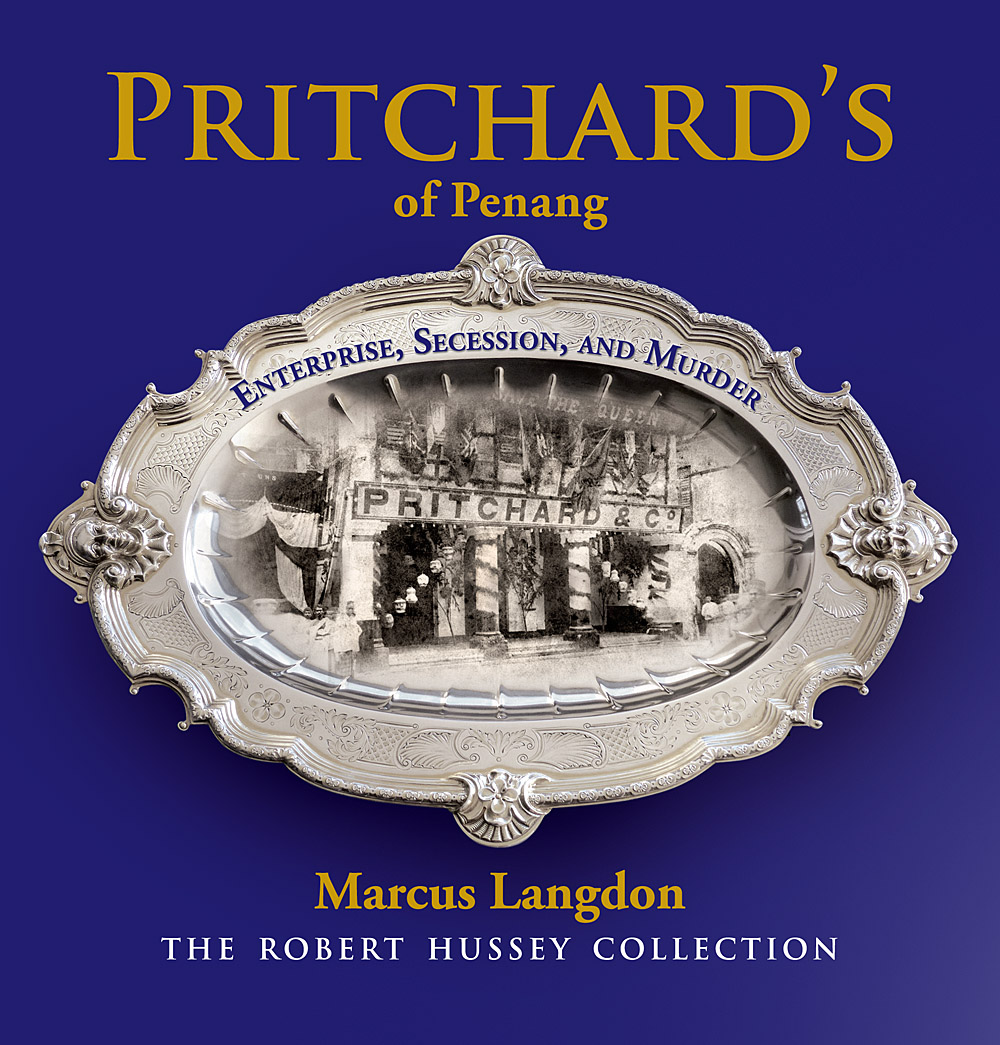
Designing Pritchard’s of Penang
This year, I had the privilege of designing and laying out an extraordinary book, "Pritchard’s of Penang: Enterprise, Secession, and Murder". It will be launched at the George Town Literary Festival (GTLF). Scheduled for 28 November 2025, from 11:30 a.m. to 12:15 p.m., this long-awaited title by historian Marcus Langdon brings to life a fascinating chapter of Penang’s past.
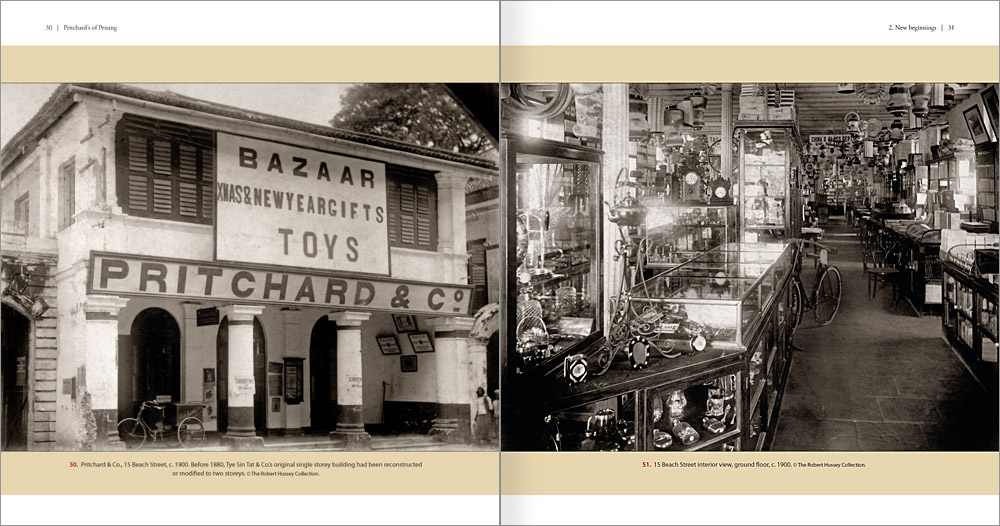
After months of hard work, the result is a beautifully produced hardcover volume that is richly illustrated with around 300 photographs from the Robert Hussey Collection, archival, and Marcus' own collection. Many of these photographs have never been published before. Through these images and Marcus’ engaging storytelling, the legacy of Pritchard & Co. Ltd. (1888–1959) emerges from near obscurity. Once the first widely diversified department store in northern Malaya, with branches in Ipoh, Butterworth, and Sungai Petani, Pritchard’s thrived during an era of transformation when electricity, telephones, motorcars, and aircraft were changing the rhythm of daily life across the peninsula.
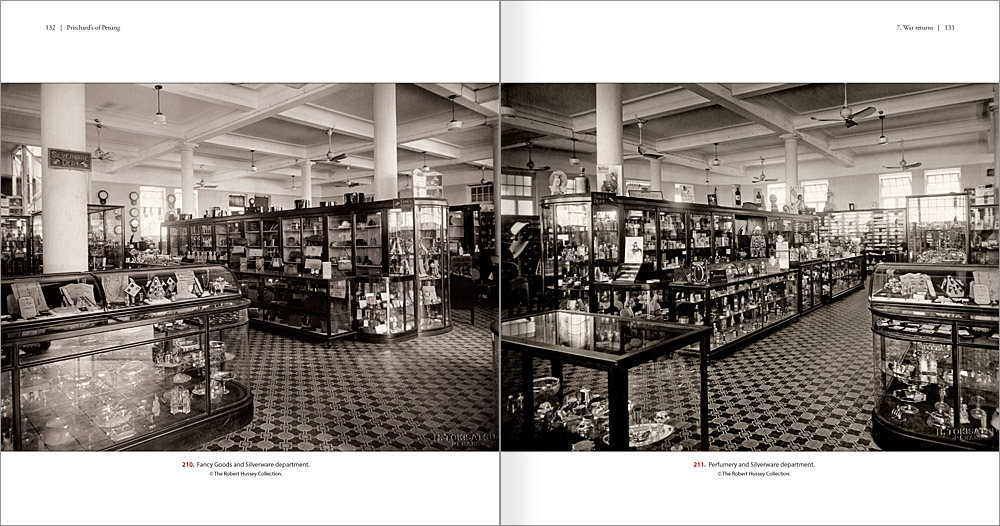
As Marcus notes in his preface, the idea for this book actually began more than a decade ago, sparked by a meeting with Robert Hussey, who had inherited a rare trove of family photographs and papers. The project gained momentum during the long months of the COVID-19 lockdowns. His hope, he adds, is that the book “restores Pritchard & Co. and the families behind it to their small but rightful niche in Penang’s history".
For me, this book was far more than a design assignment. It was a journey through Penang’s forgotten past, seen through the eyes of craftsmen, merchants, and photographers from another age. Among them was H. Tokisatsu, a Japanese photographer whose studio once stood on Bishop Street. In the 1930s, he captured the interior of Pritchard’s Union Street store, revealing the splendour and scale of a department store unmatched in Malaysia even today.
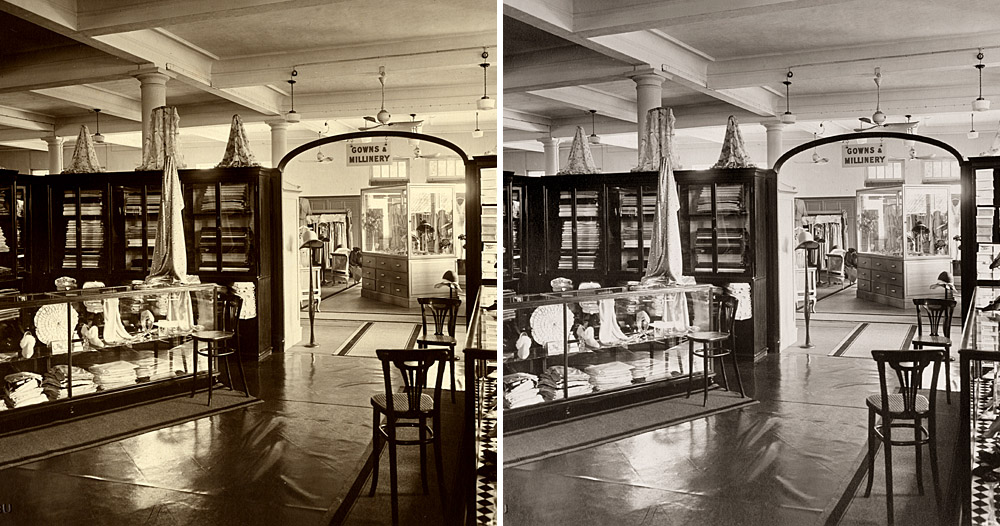
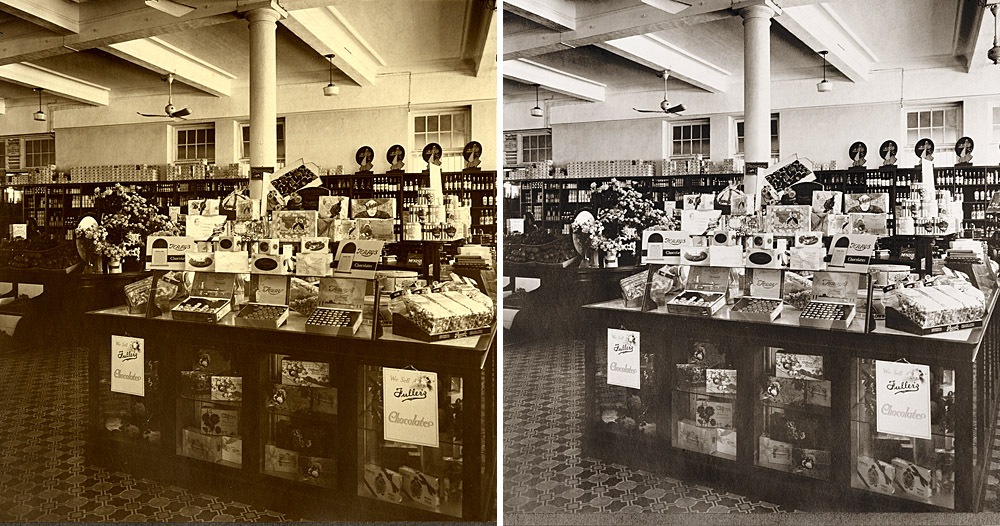
The images on the right shows the edited versions.
Many long hours were spent editing and restoring these photographs, coaxing life back into images that had faded with time. With today’s technology, AI can clean and sharpen old photos in seconds, rendering them flawless, almost too flawless. That kind of perfection often strips away their soul, leaving something sterile and untrue.
The photographs in Pritchard’s of Penang were indeed brilliant, but they required a gentler hand, the old craft of dodging and burning. As Ansel Adams reminded us, “the negative is the score, but the print is the performance". Like him in the darkroom, I spent countless hours behind a screen, adjusting tones not to rewrite reality, but to reveal it, bringing out the textures and details.
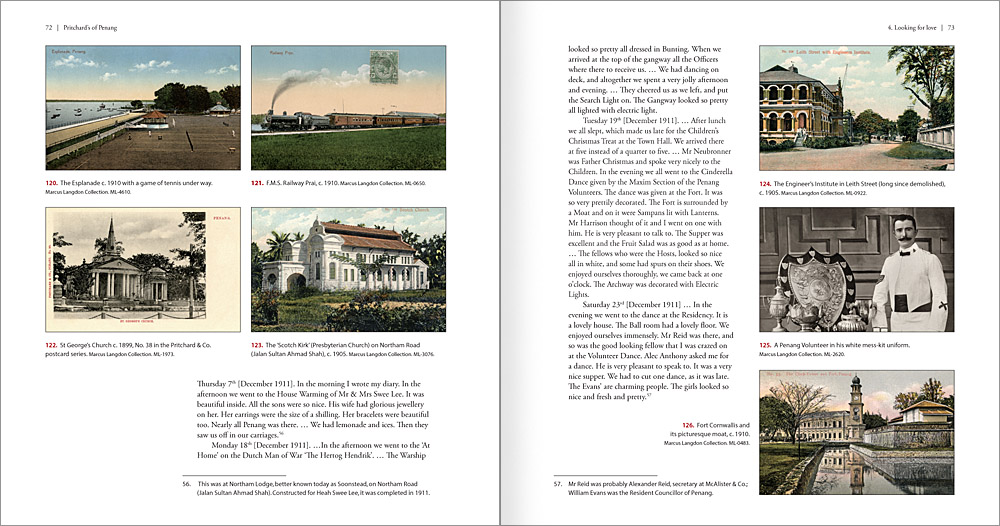
Bound as a hardcover volume measuring 24.1 cm by 25.4 cm, this 236-page book was designed to feel substantial in the hands, like a keepsake of Penang’s past. I wanted each photograph to have room to breathe, the layouts are intentionally spacious and uncluttered, giving the images the reverence they deserve. Every spread invites the reader to pause, to linger, and to look more closely at the extraordinary items and details captured in each photograph.
Sometimes, ideas surface fully formed, a concept and image rising together from some deep creative current. After more than three decades in graphic design, I have learned to trust the process when everything falls naturally into place. I rarely force a design. I give it space. I sleep over it, and then, as if by some hidden magic, something happens.
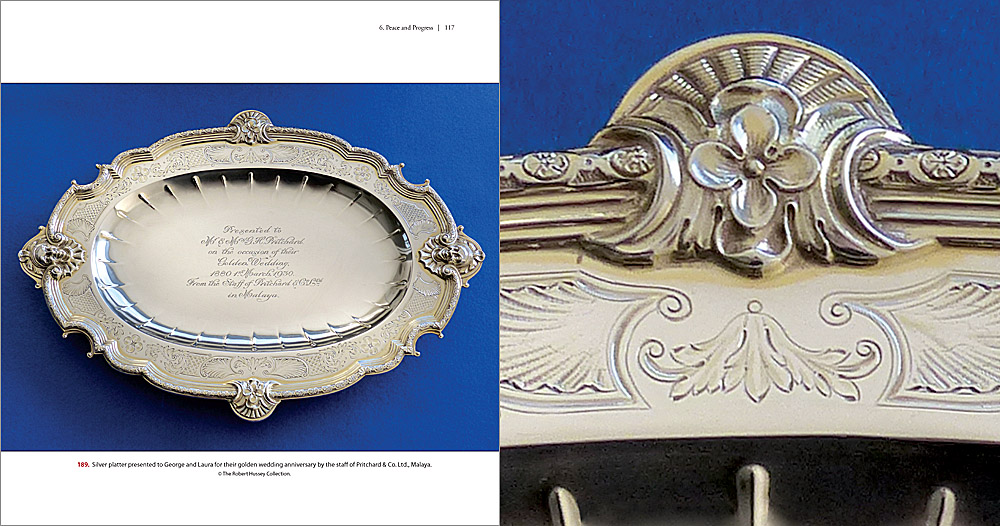
That was exactly what occurred when I came across the stunning silver platter that appears on page 117. The moment I saw it, I knew it belonged on the cover. What better way to serve up a story than on a silver platter? Inside that gleaming surface, I placed an old photograph of the store’s façade, an image filled with history, heritage, and heart.
At first, I set the platter against a vibrant royal blue background. It was bold and commanding, but it felt as though the colour was shouting. With Marcus’s input, we toned it to a deep midnight blue, a colour that lent the cover an honest sense of dignity. It allowed the silver platter to glow, like moonlight over calm water. The composition finally felt right.
Working with Marcus is always a joy. He approaches each project with patience, precision, and a deep respect for history. What I admire most is his unwavering commitment to quality. He never settles for less than the best the material deserves. We share that same pursuit, to always create something lasting, something true.
Designing this cover reminded me how much of design depends on instinct, that invisible sense of balance, weight, and emotion that cannot be measured or programmed (at least not yet). I often think about this in our age of artificial intelligence, where a computer can generate a book cover in seconds. AI can imitate styles, merge images, and follow prompts. It can create something that looks perfect, even beautiful — but it cannot feel. It lacks the instinct that breathes life into design.
When I look at many AI-generated covers, I am struck by how empty they appear beneath the beautiful surface. Everything is technically correct: the lighting, the colour harmony, the typography. Yet something essential is missing, that soft breath of intention, the small irregularities that make design human.
AI can imitate design, but it cannot replicate creative instinct. Humans design with conscience and curiosity; AI designs with computation. The difference may be invisible at first glance, but it is palpable in the heart. When a reader learns that a cover was generated by AI, something changes in their emotional connection to the book. They might admire its polish, but they may also feel slightly detached, even cheated. Knowing that no human hand shaped the work can make it feel impersonal.
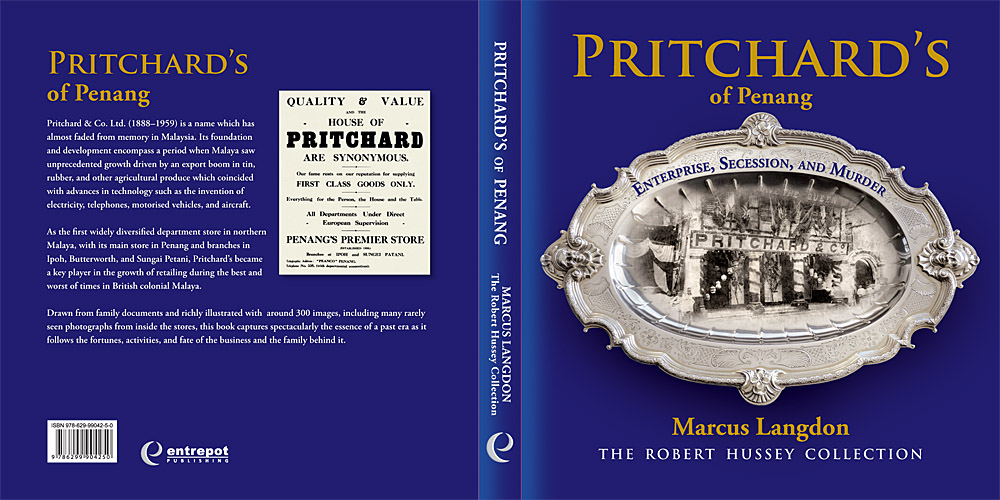
A successful book cover is more than an arrangement of elements. It is a conversation between designer, story, and reader. Every choice, from typeface to tint, carries emotion, shaped by countless decisions, revisions, and moments of doubt. That process gives the final image its weight. When a reader holds a book, they may not know why it feels right, but they can sense that a person cared enough to make it so.
AI does not care. It does not hesitate or wonder. It does not feel the pulse of the story or the breath of the photographs. To me, the human touch still matters. That intuition, patience, and imperfection are what give beauty its truth. Perhaps one day, AI will be able to design with astonishing brilliance when it can feel wonder, doubt, and joy.
Working on Pritchard’s of Penang reminded me that history itself is a kind of design, a careful act of arrangement and revelation illustrated by time. Like a photograph restored by hand, it invites us to look again at what time has nearly erased. For anyone who treasures Penang’s heritage, this book offers a rare glimpse into a world now gone, yet within these pages, it still shimmers beneath the surface of the present. It is a book to linger over, to revisit, and to keep.
-------------------------------------
Written by Adrian Cheah
© All rights reserved
22 October 2025
______________________
George Henry Pritchard
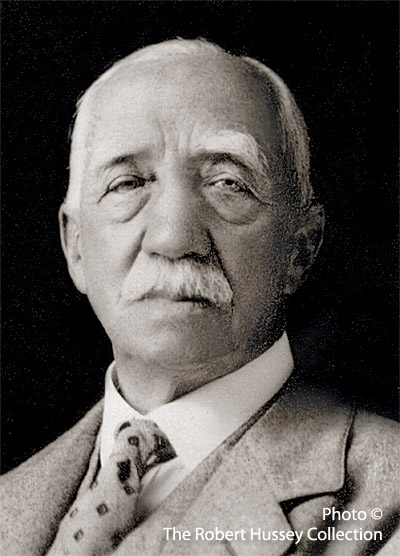
George Henry Pritchard, c. 1927.
Growing up in London in a middle-class family of tailors, George Henry Pritchard was almost pre-destined to follow the trade. But the East beckoned. Indeed, his ambitious vision to create one of Malaya’s most comprehensive department stores grew from the seeds of a small tailoring business commenced in Penang in 1888.
Staunchly British, the Pritchard family represents a snapshot of times gone by. They made the long sea voyage ‘home’ an astounding number of times, and in the end only one family member stayed on to carve a new life in Penang. Pritchard’s vision succeeded beyond all expectations—but all this changed as Malaya moved on.
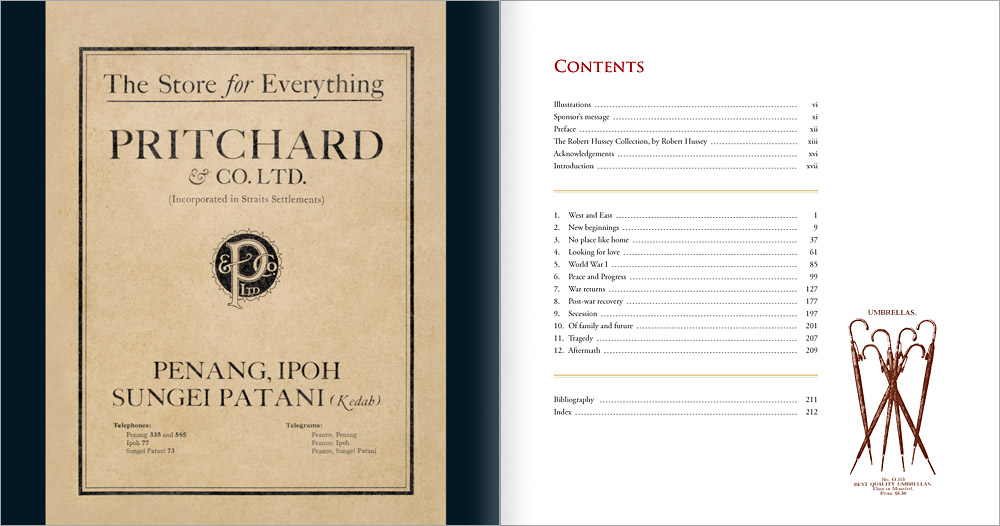
Pritchard’s of Penang: Enterprise, Secession, and Murder
By Marcus Langdon, with photographs from the Robert Hussey Collection
October 2025, Entrepot Publishing Sdn Bhd
Hardcover. 24.1 cm x 25.4 cm, 236 pages
Language: English
Illustrated throughout
Genre: Non-fiction, history
ISBN 978-629-99042-5-0
Available at entrepotpublishing.com
-------------------------------------
About the Author

Marcus Langdon has spent several decades researching the myriad fascinating stories in Penang’s developed history. Based in Penang, he also advises on historical projects and was a founding director of Entrepot Publishing Sdn Bhd.
Other titles by Marcus include:
- Penang: The Fourth Presidency of India 1805–1830
o Volume 1, ‘Ships, Men and Mansions’. Areca Books, 2013.
o Volume 2, ‘Fire, Spice and Edifice’. George Town World Heritage Incorporated, 2015.
o Volume 3, ‘Water, Wigs and Wisdom’. Entrepot Publishing, 2021. - Biographical Dictionary of Mercantile Personalities of Penang, (contributing editor). Think City/MBRAS, 2014.
- George Town’s Historic Commercial and Civic Precincts, (researcher/writer). George Town World Heritage Incorporated, 2015.
- Epitaph: The Northam Road Protestant Cemetery, George Town, Penang. George Town World Heritage Incorporated, 2017.
- The Habitat Penang Hill: a pocket history, Marcus Langdon & Keith Hockton. Entrepot Publishing, 2018.
- Penang Then & Now: A Century of Change in Pictures, Marcus Langdon & Keith Hockton. Entrepot Publishing, 2019.
- Pastoral Port: An Agrarian History of Penang. Penang Institute, 2023.
- George Town & Adelaide: Sister Cities 50th Anniversary 1973–2023, Marcus Langdon & Rachel Yeoh. MBPP, 2024.
Book Launch: 28 November 2025
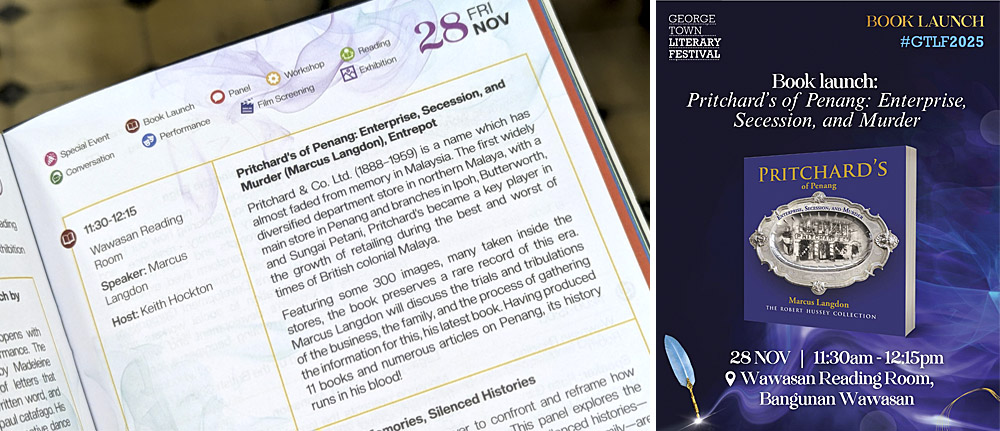
The launch of "Pritchard’s of Penang: Enterprise, Secession, and Murder" at the 2025 George Town Literary Festival drew a full house—every seat taken, with latecomers lining the walls of the Wawasan Reading Room, located on the first floor of Bangunan Wawasan on Gat Lebuh China. Keith Hockton from Entrepot Publishing opened the session with a warm introduction before inviting author Marcus Langdon to the podium.
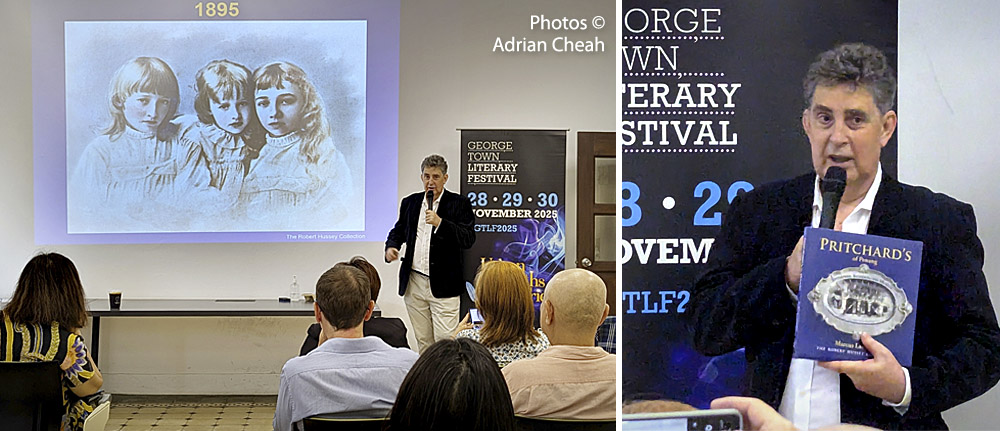
Over the next forty-five minutes, Marcus guided the audience through the remarkable story behind the long-forgotten Pritchard & Co. Ltd., weaving together archival research, rare photographs and personal insights. His presentation, accompanied by visuals projected onto the screen, brought Penang’s past vividly to life.
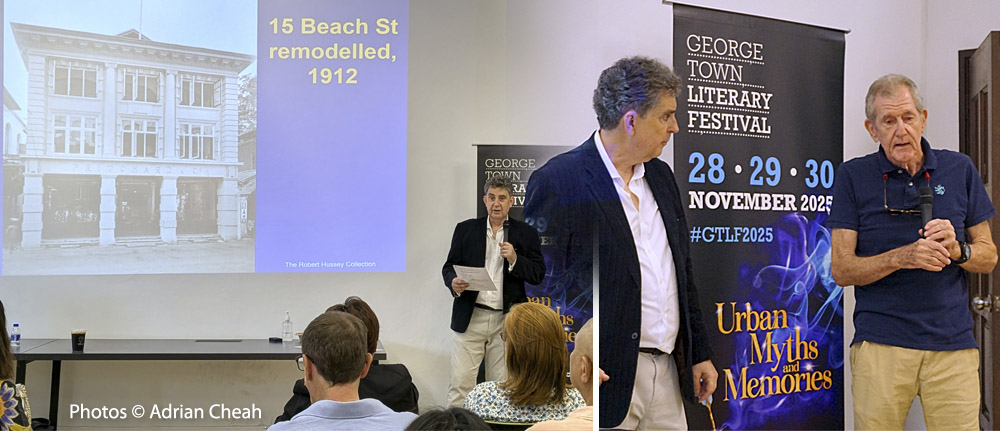
Marcus then passed the floor to Robert Hussey, whose family collection forms the visual backbone of the publication. In a brief yet affecting reflection, Robert spoke of how he came to inherit the photographs and journals that now illuminate this remarkable chapter of Penang’s history. When Marcus took the floor again, he paused at one point to offer generous words of acknowledgement for my work on the book’s design and layout—an unexpected and deeply appreciated gesture.
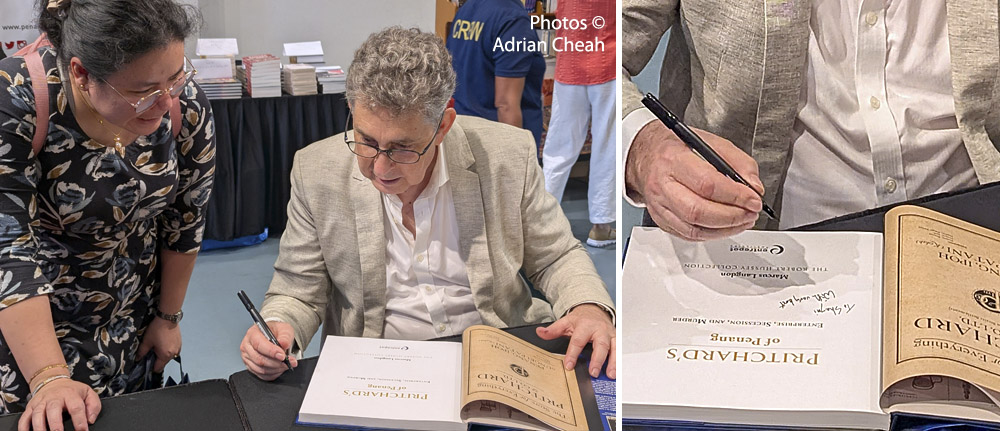
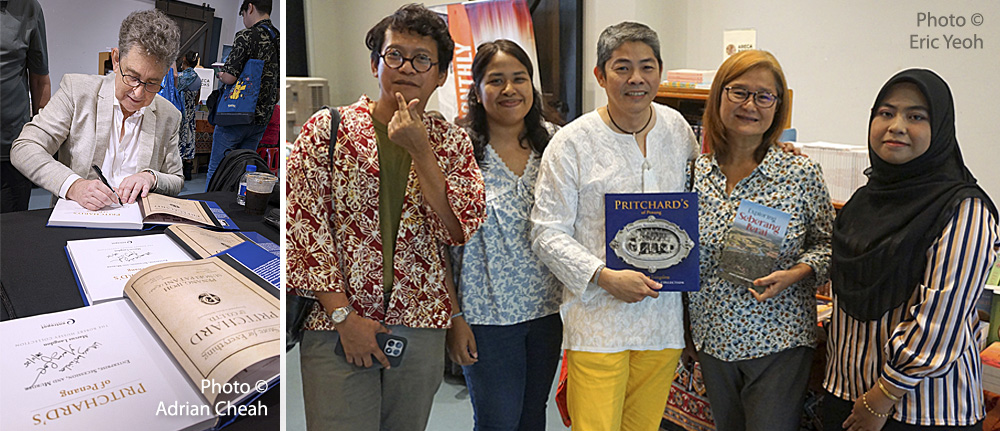
After the session concluded, the crowd adjourned to the adjacent UAB Building, where Areca Books had set up a table stacked high with freshly printed copies of the newly launched book. Marcus was on hand to sign copies as readers queued patiently.
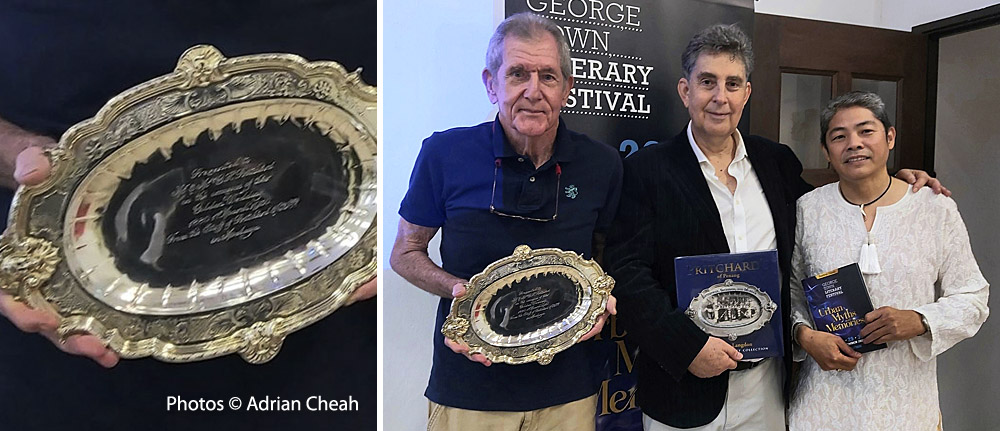
I managed to capture a photograph of the three of us—Marcus, Robert, and myself—immediately after the presentation, with Robert holding the original silver plate featured on the book’s cover. It was a moment of collective pride. To have been part of the team that brought this book to fruition, and to witness its reception in such a packed and appreciative room, was deeply gratifying.
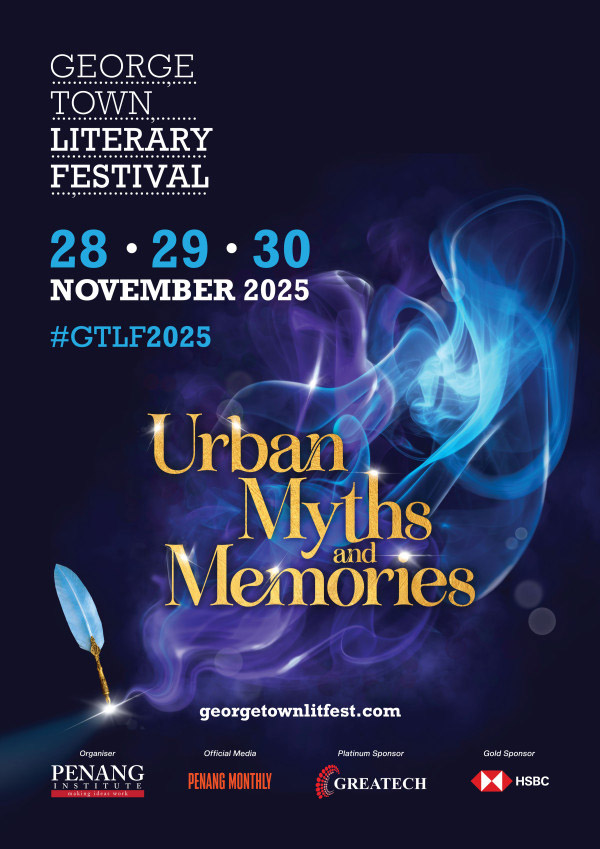
PS: The George Town Literary Festival (GTLF) is Malaysia’s leading international literary festival, held annually in the UNESCO World Heritage city of George Town, Penang. Founded in 2011 and organised by Penang Institute, GTLF has become one of Southeast Asia’s most respected platforms for literary exchange and ideas. Its carefully curated programme of panels, readings, lectures, workshops, and performances brings together writers, poets, and thinkers from around the world. The 2025 edition of the festival took place from 28 to 30 November 2025, celebrating stories that connect history, memory, and place in the heart of George Town.